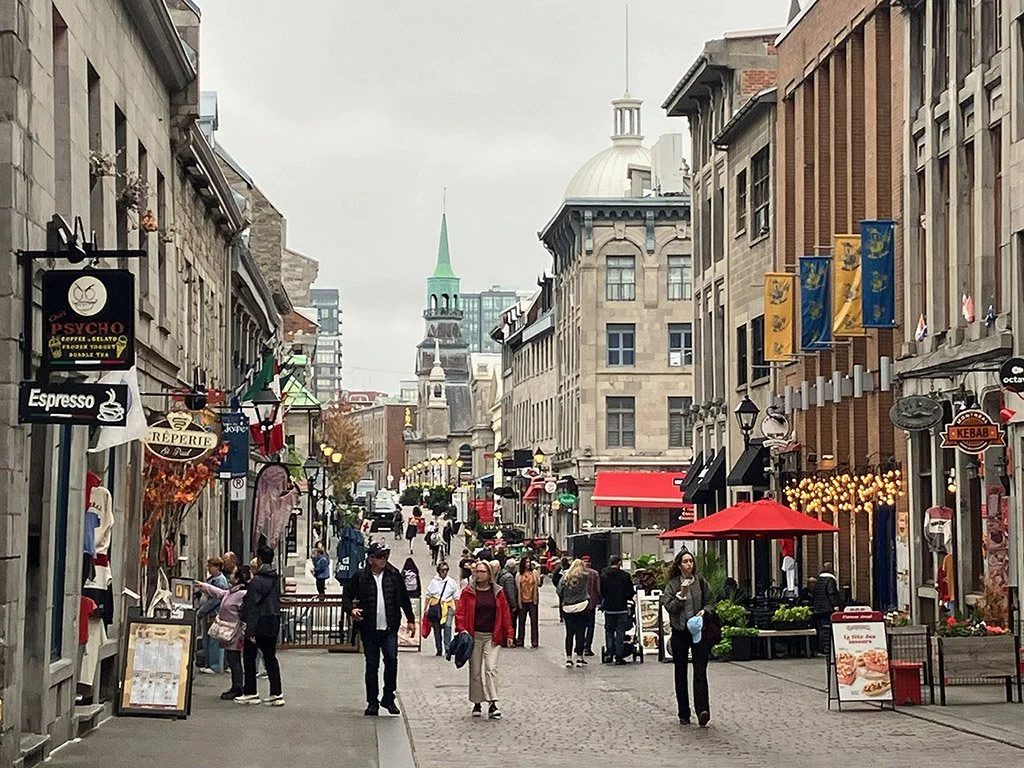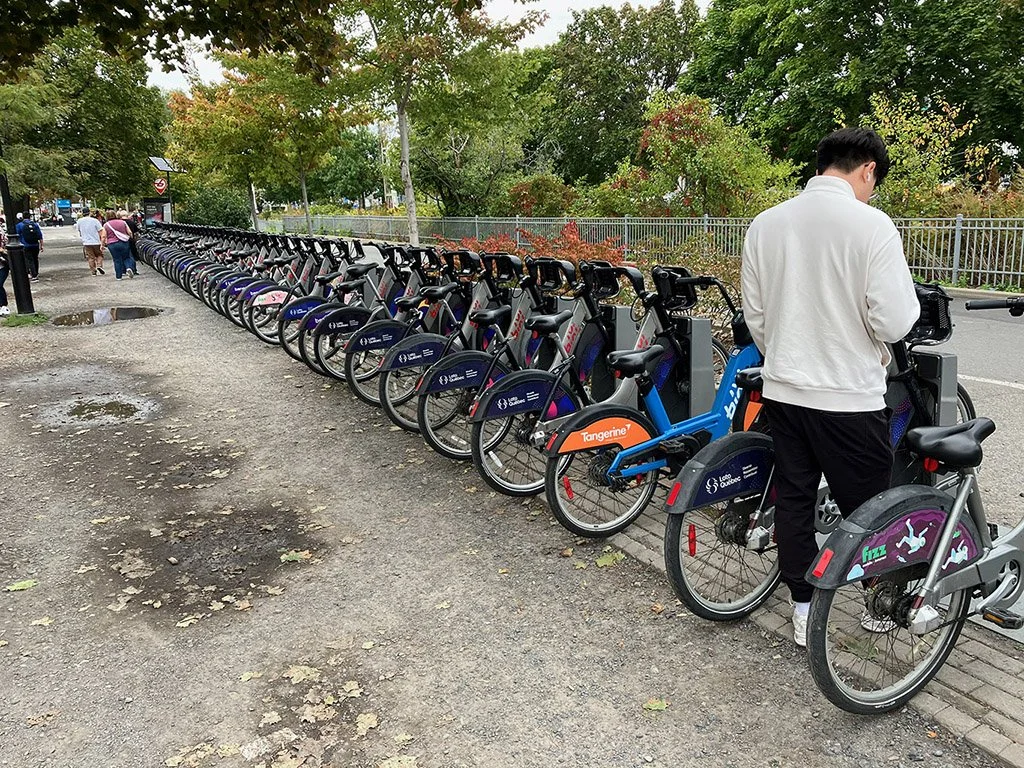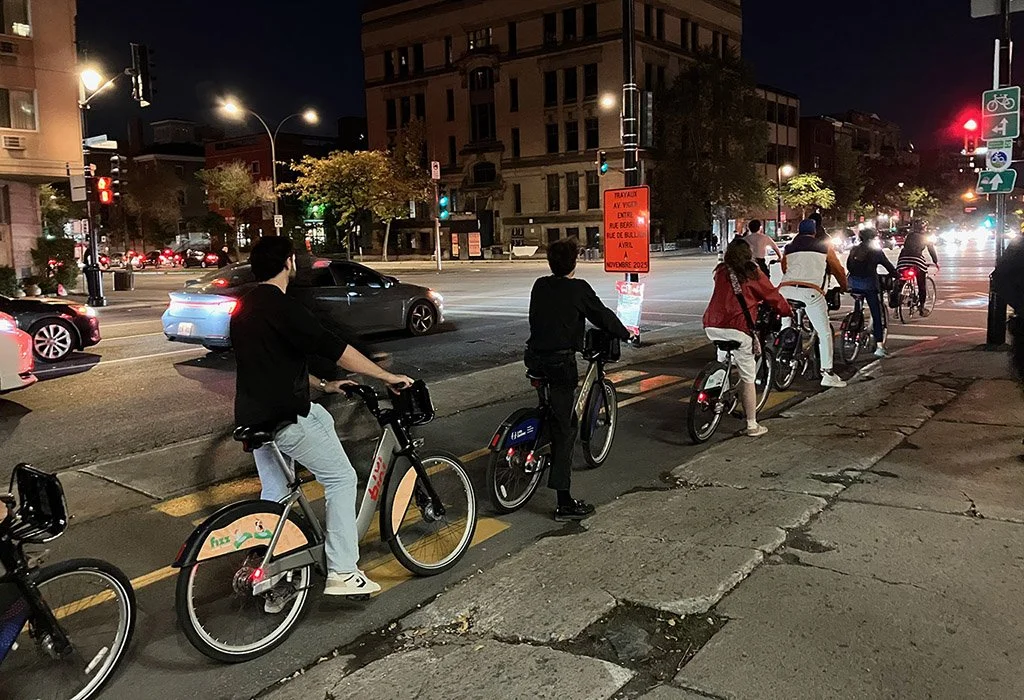OUT IN THE WORLD WITHOUT A PERSONAL CAR: Upstate New York and Canada
By Steve Price
My wife Janet Byron and I took a September whirlwind tour of the East, traveling by train to Brooklyn, Poughkeepsie, Buffalo, Niagara, Toronto, Montréal, and Quebec City. Except for Niagara Falls, we moved about the cities by bicycle and transit. We rented bicycles twice, and used bike share to explore all the cities. Our travel assumptions: walking is good for experiencing neighborhoods; transit is good for experiencing urban centers; bicycling is good for experiencing the city as an interconnected system of neighborhoods and centers.
Our mobility was great despite my discomfort walking because of spinal stenosis. Bicycling did not bother me. We used Lyft a couple of times when we couldn’t figure out how to get to train stations on time.
We started by flying to New York to visit Janet’s family. There Janet and I took bike share bikes and toured Brooklyn and Prospect Park. Prospect Park seemed to be car-free when we were there. We were impressed by the growing use of bicycles and bike lanes in Brooklyn—lots of separated bike paths (cycle tracks).
According to transportation planner Jarret Walker, who is also author of the book Human Transit, planners and activists don’t have to go to Europe or Asia to find models for car-free mobility. Canada has a lot of lessons to teach. Montréal was the most evolved for bicycle travel where the number of bicycles matched or exceeded the number of cars on many streets.
The transit we rode in Canada was clean and frequent with diverse riders. Canadian cities are diverse racially and ethnically—and clean. I asked a couple of people where the bad parts of town were in Toronto and Montréal, and they couldn’t tell me. A Google Maps search of "high crime areas" in Canadian cities look like tidy middle-class neighborhoods in US cities. We saw some graffiti, but not a lot. In Quebec we often felt like we were in France, with most people speaking French and almost all signage in French (not bilingual).
A bike share ride through Prospect Park in Brooklyn New York—designed by Frederick Law Olmsted—was beautiful. The park was much larger than we expected.
Prospect Park was still verdant in late September
In Poughkeepsie, NY, a railroad bridge spanning the Hudson River was converted into the world’s longest elevated bike/ped bridge.
In Buffalo, NY, we encountered more beautiful neighborhoods and parks designed by Frederick Law Olmsted.
In the background behind our big heads is the spectacular Martin house designed by Frank Lloyd Wright. Buffalo has lots of architectural gems.
Toronto has an imposing downtown that is growing. We had no trouble bicycling through and hopping on transit. Tap ticketing readers with a credit card and you’re on.
Toronto also has quiet, tree-lined neighborhoods. The right side of this duplex is where urbanist Jane Jacobs lived after she left New York.
On Bloor Street, one of the major commercial streets of Toronto, bike traffic on bicycle lanes approaches or matches car traffic. It has some of the most expensive retail blocks in Canada.
In Montréal much of the waterfront along the St. Lawrence River is a neighborhood with a European feel, providing a deeper understanding of North American history.
We marveled that these cobblestone streets in Montreal’s old city were on the same continent that we live on.
Several streets in downtown Montréal had this much bike traffic.
The subways were clean and well used. You can look down through the length of the train as if the interior is one long, visually unobstructed corridor.
Bike share stations are incredibly numerous all over Montréal. Owning a personal bicycle to get around town almost makes no sense. Riding your own bike for recreation is something to do on the weekends.
In Montréal we saw most bicycle riders using bike share.
Quebec City, the provincial capital of Quebec, is the only walled city north of Mexico, and with the most intact walls.
The historic parts of Quebec City span over 400 years. Except for cities started in recent decades, all North American cities started as walkable places.
This could be somewhere in France—lots of mansard roofs on buildings.
Quebec City has a tremendous variety of architecture that reflects its age.



















